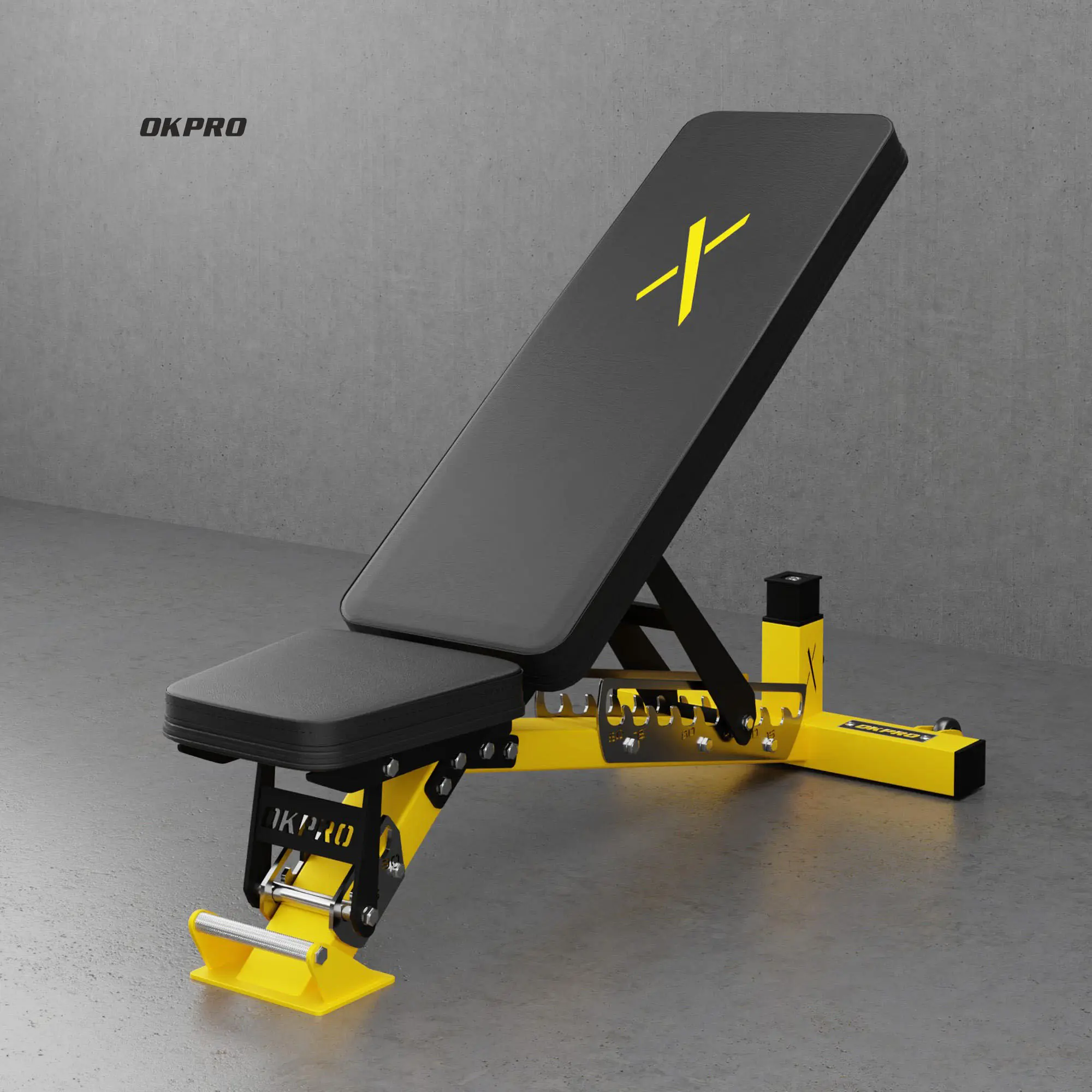24/7 Access & Unmatched Convenience
Workout on Your Schedule
Access to a personal gym allows you to workout on your schedule, offering flexibility that suits busy lifestyles. Unlike traditional gyms with fixed hours, a Home gym ensures you can train during peak times, enhancing your workout effectiveness and adherence to your routine. Consistent exercise is key to long-term fitness, and a home setup aids in maintaining a regular schedule without interruptions from holidays or hectic work weeks. Furthermore, adopting a consistent workout regime, free from time constraints, has been shown to significantly contribute to overall health and fitness gains.
Eliminate Commute Time & Crowds
By eliminating the necessity to travel to a gym, home gyms save valuable commute time, encouraging more frequent workouts. This also removes the stress associated with crowded gym environments that can deter individuals and negatively impact performance and enjoyment. Research indicates that when workouts are more convenient and stress-free, people are more likely to persist in their fitness routines, leading to improved results and satisfaction. The home gym model thus not only enhances the physical fitness experience but also offers the advantage of a distraction-free and time-efficient environment.
Long-Term Financial Benefits of Ownership
Cost Comparison: Gym Memberships vs Equipment Investment
Investing in Fitness equipment for home workouts can provide significant long-term financial benefits compared to the recurring costs of gym memberships. The average gym membership can cost anywhere from $50 to $150 monthly, amounting to $600 to $1,800 annually. In contrast, purchasing home fitness equipment is often a one-time expense that can provide years of use. For example, investing in a quality treadmill or a set of free weights can cost a similar amount upfront but doesn't incur the ongoing costs associated with gym memberships. Studies indicate that investing in quality fitness equipment can lead to significant savings when compared to paying monthly dues over several years.
Furthermore, the break-even point of such investments is often reached sooner than one might expect. By analyzing the costs over a span of three to five years, it becomes clear that owning workout gear is economically advantageous. This is especially pertinent in the context of rising gym fees and the need for flexibility in workout scheduling. By opting for a one-time investment in fitness equipment, individuals can save money and seamlessly incorporate exercise into their daily routines without financial constraints.
Hygiene Control & Personalized Fitness Tracking
Avoid Shared Equipment Germs
Maintaining personal hygiene in fitness is crucial, especially with the ongoing threat of flu seasons and recent global health issues. Using personal fitness equipment minimizes exposure to germs commonly found on shared gym equipment. Several studies reveal that individuals are less likely to contract illnesses when they use their own equipment for workouts compared to public gym facilities. This not only ensures a cleaner and more hygienic workout environment but also provides greater peace of mind for those concerned about health risks.
Customized Progress Monitoring
Personal fitness tracking devices can significantly enhance workout experiences by providing customized progress monitoring. By syncing with home equipment, these devices enable tailored progress analysis, which is superior to generic gym programs. Personalized fitness apps offer tools to set and evaluate specific workout goals, leading to improved outcomes. Data-driven insights suggest that individuals engaged in personalized workouts can achieve their goals up to 30% faster than those following standard plans. This boost in efficiency and effectiveness underscores the importance of customization in fitness routines.
Smart Equipment Choices for Modern Lifestyles
Space-Saving Adjustable Dumbbells
Adjustable dumbbells are a fantastic solution for those seeking space-saving fitness equipment without compromising the quality of their workouts. These versatile dumbbells can replace multiple sets of traditional weights, which is a significant advantage for individuals living in small apartments or urban areas where space is at a premium. Their compact design allows users to engage in strength-building exercises effectively, similar to what you might get in a gym setting. Experts note that the adjustability ensures that workouts are tailored to the user's evolving strength levels without the need for excessive gear. This feature makes adjustable dumbbells an excellent choice for both beginners and seasoned fitness enthusiasts.
All-in-One Multi-Functional Trainers
The multi-functional trainer is a game-changer for individuals looking to create a complete home gym within a compact area. These versatile trainers offer a variety of workout options targeting different muscle groups, making them perfect for full-body training. By integrating multiple exercise modalities into one piece of equipment, users can save both space and money, eliminating the need for several separate machines. Fitness experts highlight that such all-in-one systems can efficiently enhance overall fitness levels, providing comprehensive workouts for strength, cardio, and flexibility. Their adaptability and efficiency make them a cornerstone of any space-conscious fitness setup.
Strategic Selection Process for Maximum ROI
Audit Your Fitness Goals First
Before investing in fitness equipment, it's crucial to assess individual fitness goals to ensure your purchases meet specific needs. By identifying clear objectives, you can choose equipment that effectively supports your workout routines and enhances satisfaction. Moreover, setting measurable goals aligned with available equipment boosts motivation, with studies indicating higher success rates among individuals who do so. This approach ensures a focused and strategic investment that maximizes the benefits of your fitness journey.
Prioritize Commercial-Grade Durability
Investing in commercial-grade fitness equipment for home use offers several advantages, particularly in terms of durability and longevity. These robust machines are designed to withstand frequent use, lending themselves to a cost-effective investment with an extended lifespan. When comparing commercial-grade build quality to standard home gym equipment, the former often proves superior, reducing maintenance costs over time. Research indicates that purchasing durable equipment paves the way for better ROI, as fewer replacements and repairs are needed, enhancing the overall financial benefit for users.
Verify Warranty Coverage
Choosing fitness equipment that comes with robust warranty options is essential for protecting your investment. A comprehensive warranty typically covers both parts and labor, offering peace of mind and financial security in case of repairs. By examining warranty lengths and conditions across popular fitness brands, consumers can make informed decisions on long-term ownership implications. Experts emphasize that warranties are a pivotal component in securing the value of fitness equipment over time, ensuring you are shielded from unforeseen expenses.
Future-Proofing Your Fitness Investment
Emerging Trends in Home Gym Technology
As the demand for home fitness solutions increases, emerging technologies are reshaping the landscape of home gyms. Key trends impacting this sector include the integration of smart technology into fitness equipment and the availability of virtual workout options. These advancements elevate the home workout experience by offering personalized and interactive sessions. The growing importance of connected devices enables users to track metrics, receive on-demand coaching, and participate in interactive workouts, enhancing their overall workout efficiency and engagement. According to industry analysts, technology will significantly influence the evolution of the fitness market, offering enriched experiences that cater to a wider range of fitness levels and interests.
Market Growth & Equipment Resale Value
The home fitness market's robust expansion is closely tied to equipment's resale value, which has witnessed a substantial uptick due to global trends emphasizing health and wellness. Recent reports indicate an impressive rise in consumer interest in home fitness gear, spurred by factors like health awareness and lifestyle changes. The market, valued at approximately $17.97 billion in 2024, is projected to achieve a compound annual growth rate (CAGR) of 5.75%, reaching $25.17 billion by 2030. This surge underscores a lucrative opportunity for investors, as sought-after equipment often commands higher resale values. Experts suggest that purchasing popular equipment not only benefits personal health but also provides financial returns through enhanced resale prospects, contributing to a sound fitness investment strategy.
FAQ
Why is a home gym more convenient than a traditional gym?
A home gym allows for flexible workout schedules and eliminates commute time, making it easier for individuals to stick to their fitness routines without dealing with crowded gym environments.
Is investing in home gym equipment financially beneficial in the long run?
Yes, investing in quality home gym equipment can lead to significant savings compared to the recurring costs of gym memberships and also offers the potential for resale value.
What are the hygiene benefits of a home gym?
Using personal fitness equipment minimizes exposure to germs found on shared gym equipment, providing a cleaner and more hygienic workout environment.
How can home gym equipment be space-efficient?
Options like adjustable dumbbells, foldable treadmills, and all-in-one multi-functional trainers are ideal for creating a comprehensive workout space in smaller living areas.

